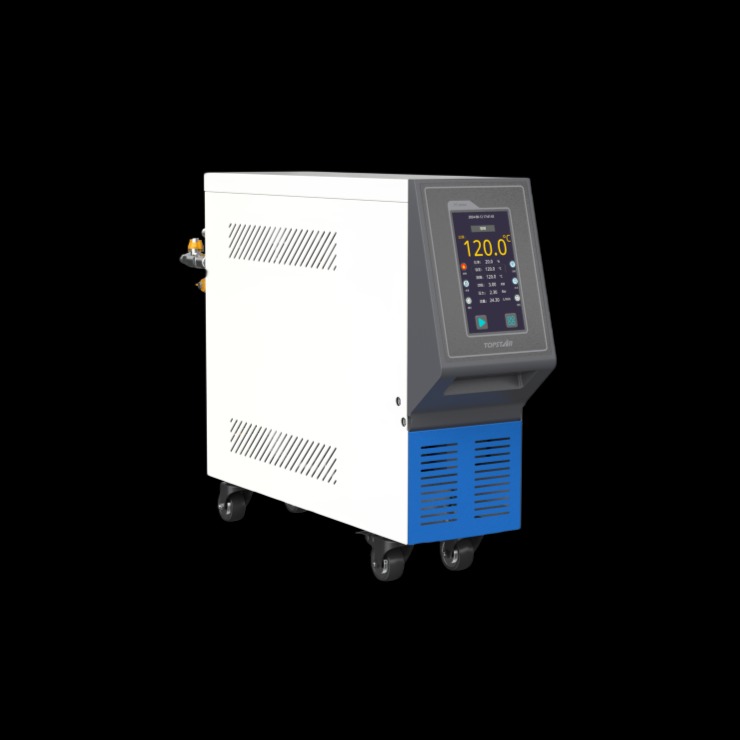What role does a mold temperature controller play in reducing manual intervention?
In injection molding, precise temperature control is crucial to ensuring the quality and consistency of molded parts. Mold temperature controller play a crucial role in automating this process and minimizing manual intervention. Their introduction into the industry has significantly improved production efficiency, reliability, and speed. We’ll share how mold temperature controllers can reduce manual intervention in injection molding and their impact on the manufacturing process.
Improving Accuracy and Consistency with Mold Temperature Controller
One of the key advantages of mold temperature controllers is their ability to provide precise temperature control. Manual systems require operators to frequently adjust heating or cooling mechanisms, often resulting in inconsistencies due to human error or delayed responses. Mold temperature controllers continuously monitor and adjust the temperature, ensuring that you maintain the mold at the optimal temperature for the material being molded.
With mold temperature controllers, the System can be programmed to automatically maintain the ideal temperature range and make precise incremental adjustments. This ensures highly repeatable processes and reduces cycle-to-cycle variability. Ultimately, the molding process is more reliable and consistent, improving the overall quality of the parts produced and reducing the need for manual intervention.
Eliminate Manual Temperature Adjustment with Smart Sensors
Mold temperature controllers utilize advanced sensors to monitor and adjust temperature in real-time. These sensors continuously monitor mold temperature and send feedback to the controller, enabling automatic adjustments without manual intervention. Smart sensors can detect even the slightest temperature fluctuations, ensuring the mold remains within the optimal temperature range for the specific material and process.
Because there’s no need to manually check and adjust the temperature, the risk of operator error is significantly reduced. These systems offer precision that’s difficult to achieve manually. Automated temperature control is a significant step toward improving injection molding efficiency, reducing time and labor.
Reducing Downtime and Improving Efficiency with Mold Temperature Controller
With traditional molding systems, operators often need to monitor and adjust mold temperatures during production manually. This can lead to downtime, especially if the System experiences temperature fluctuations that require troubleshooting. The time spent making these adjustments not only slows production but also increases the likelihood of errors and defects in molded parts.
With mold temperature controllers, you automate temperature regulation, eliminating the need for constant human oversight. Because the System continuously monitors and adjusts temperatures in real time, automated systems significantly reduce downtime. This increased efficiency enables manufacturers to produce more parts in a shorter time, improving overall productivity and minimizing labor costs.
Enhanced Control with Multi-Zone Temperature Management
In complex injection molding processes, multiple zones within the mold need to be independently managed to achieve optimal results. Traditional systems require operators to manually adjust temperature settings for different zones, which is tedious and prone to inconsistencies. Using a mold temperature controller, you can independently control and monitor each zone. Multi-zone mold temperature controllers enable manufacturers to achieve greater precision by independently controlling the temperature of each zone. This feature eliminates the need for manual intervention, as the system automatically adjusts the temperature of each zone based on the specific requirements of the mold and material you are using.
Reduces the Risk of Overheating and Equipment Damage
Without a mould temperature controller, the risk of overheating or overcooling increases, potentially leading to equipment damage and reduced molded part quality. Overheating can cause mold deformation, leading to defects in the finished part; undercooling can cause material flow issues, resulting in poor filling and incomplete molding.
Mold temperature controllers help mitigate these risks by automatically adjusting the temperature to ensure the mold does not exceed recommended limits. By maintaining a constant and controlled temperature, mold temperature controllers help protect the mold and surrounding equipment, reduce the risk of costly damage, and reduce the need for manual troubleshooting.
Value in Reducing Human Intervention
Mold temperature controllers play a vital role in reducing manual intervention during the injection molding process. By automating temperature regulation, they ensure consistent and accurate temperature control, which improves the quality of molded parts, reduces downtime, and increases overall efficiency. The integration of advanced sensors, multi-zone control, and automatic adjustment capabilities eliminates the need for manual monitoring and control.







